Explaining the Building: A Holocaust Memorial of Light

The prospect of dedicating a synagogue to be both a Holocaust memorial and home to a living, vibrant community of Jews, is an extraordinary undertaking. Yet, such was Rabbi Rosenblum’s vision.
And precisely because he was conscious of the burden of carrying this history forward, he ensured that the central motif of the synagogue should be light in the darkness. The emphasis was on survival against all odds, and how we must use the life gifted us to make a positive impact on the world.
After all, only 30 years after Rosenblum had been stripped of his entire family during the Holocaust, his ‘new’ family – a congregation of Jewish worshippers – had grown to such a size that they needed a synagogue to be built to hold them all.
The plaque at the entrance confirms this:
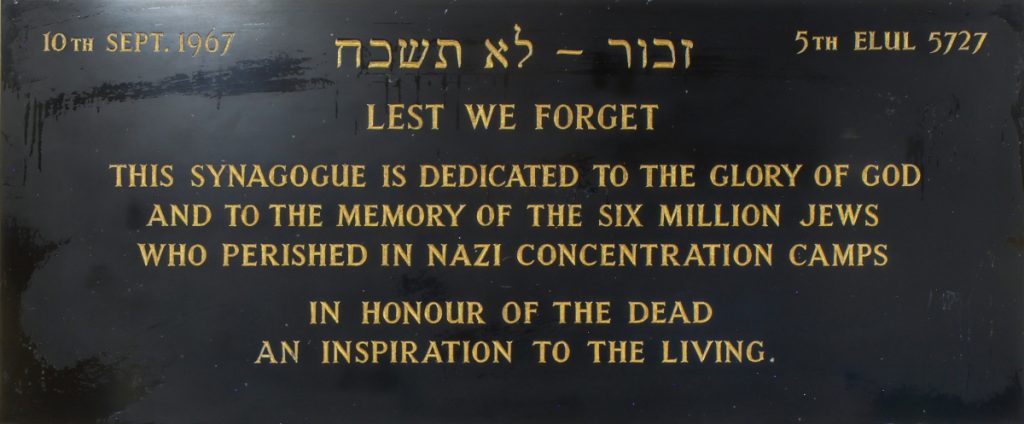
Note the unusual wording: “In Honour of the Dead, An Inspiration to the Living”. The emphasis, as outlined in Rabbi Rosenblum’s consecration speech shows a commitment to take a positive light forward into the post-Holocaust world: we must be an inspiration – a ‘Light unto the Nations’.
The concept of light in the darkness helps to explain the building’s architectural motifs and design features.
The façade of the Synagogue, with its lofty roof and high-arched canopy is light and airy. The external walls – in a middle eastern inspired grille design – give a sense of protection whilst letting much light through
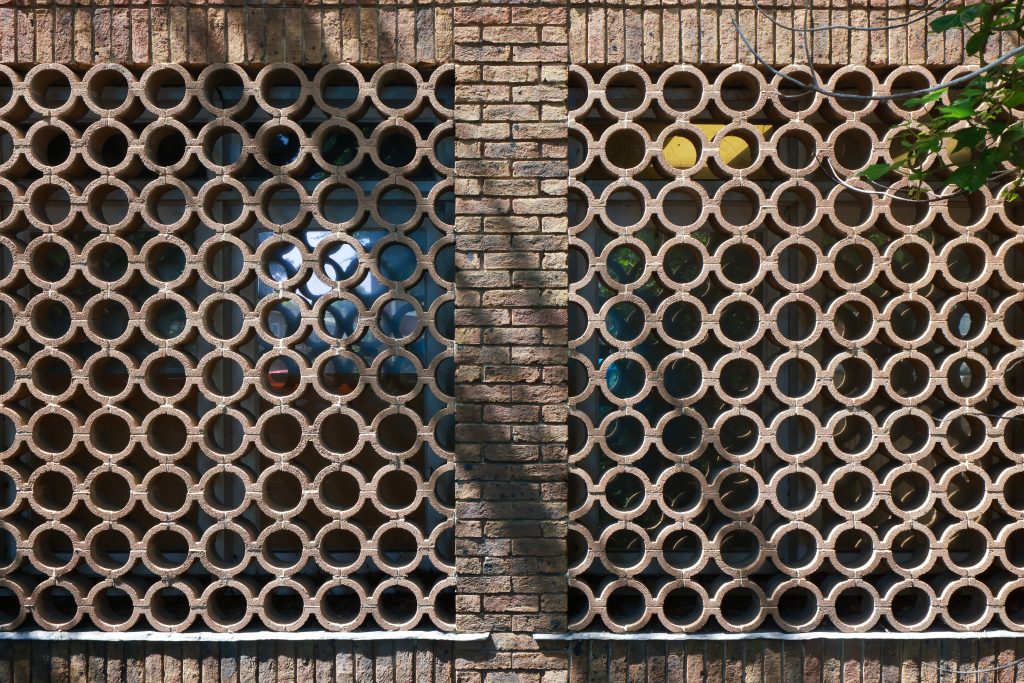
Once inside, there are an extraordinary number of windows throughout the building – including a wall of long internal windows lining the entrance foyer, looking down on the AJEX Hall below – itself lit by large windows all along the external wall. This ‘open plan’ design, was cutting edge at the time.
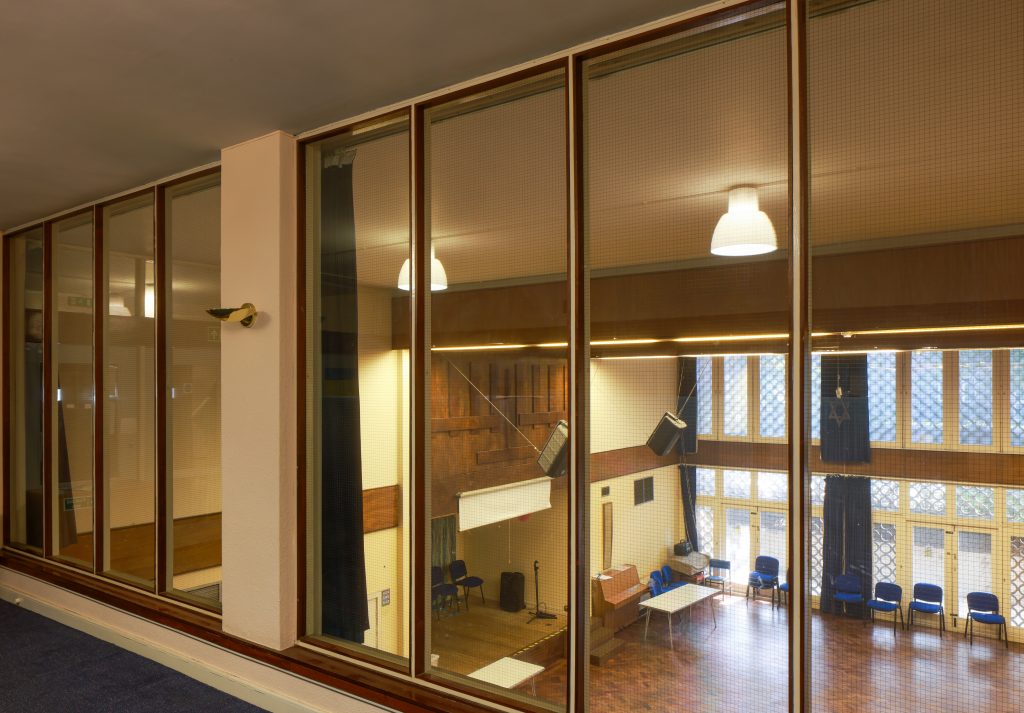
Subtler symbols of light in the darkness exist, once you know what you are looking for! In the AJEX Hall – the social meeting place on the lower ground floor – there is a large wooden representation of a Hanukkiah watching over the community space all year around. This 8-branch candelabra is used exclusively during Hanukkah – the Festival of Light – which occurs mid-winter at the darkest time of the year.
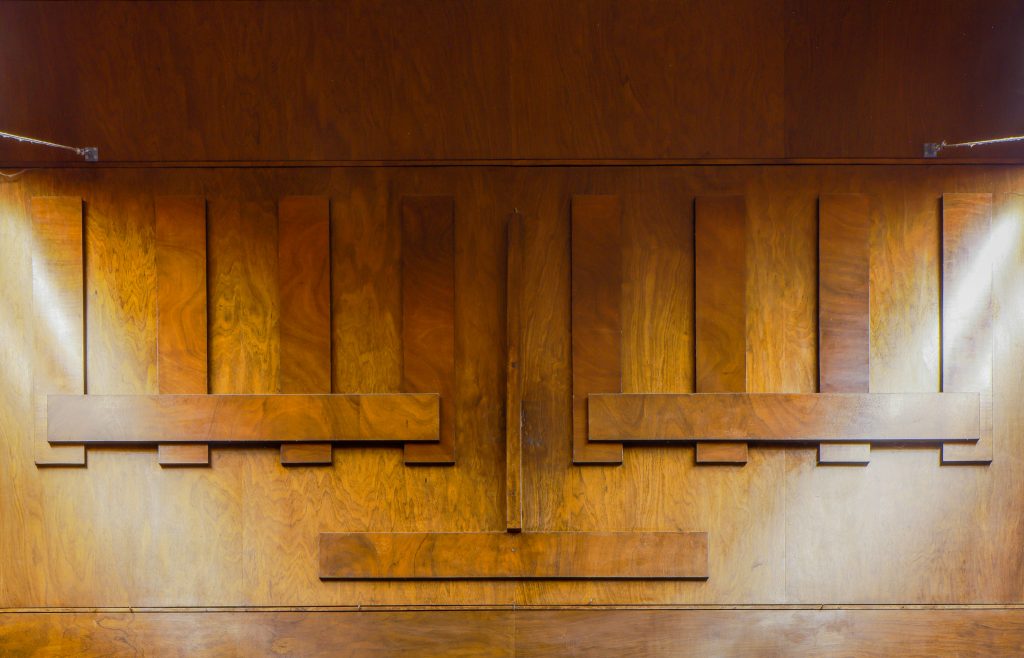
The wooden side panels in the Prayer Hall can be pulled back when classrooms are not in use in order create extra space for congregants on the High Holy days, as well as to let additional natural light into the prayer hall with light from rows of windows.
Even the stairwells are flooded with light.
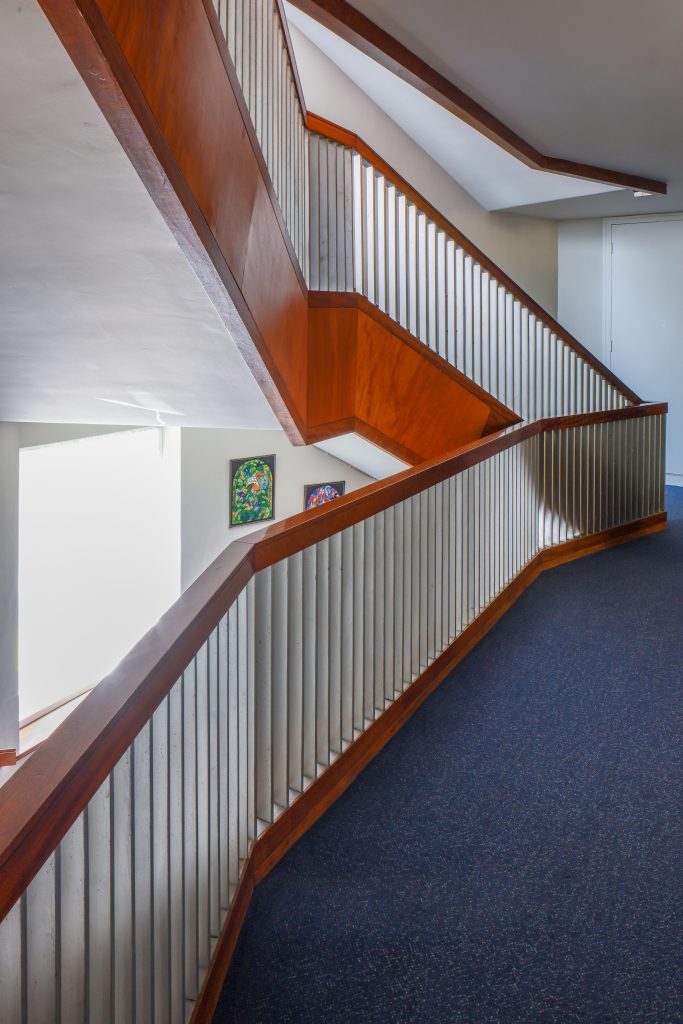
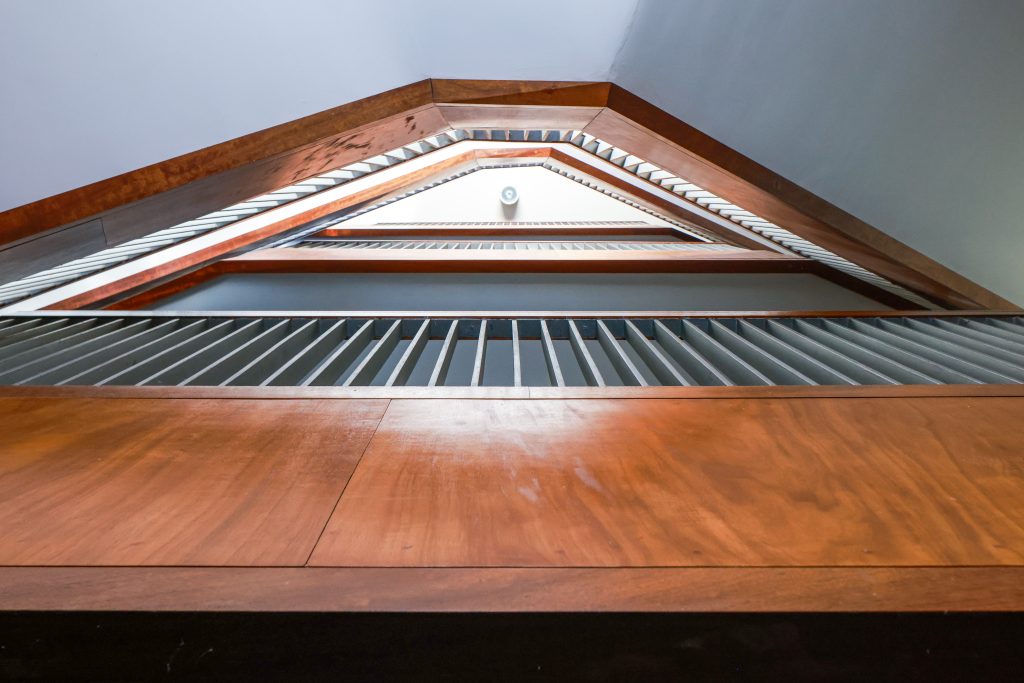
Therefore, it makes sense, within this scheme, that the dramatic centrepiece of the synagogue should be the most fantastic work of light of all: John Petts’ magnificent stained-glass triptych and Ark Doors – with the burning bush (ultimate symbol of Light) at its centre. And at the centre of the burning bush… a single piece of clear, unpainted glass – that at certain times of the year, allows a beam of pure, unfiltered sunlight to penetrate into the heart of the Prayer Hall.
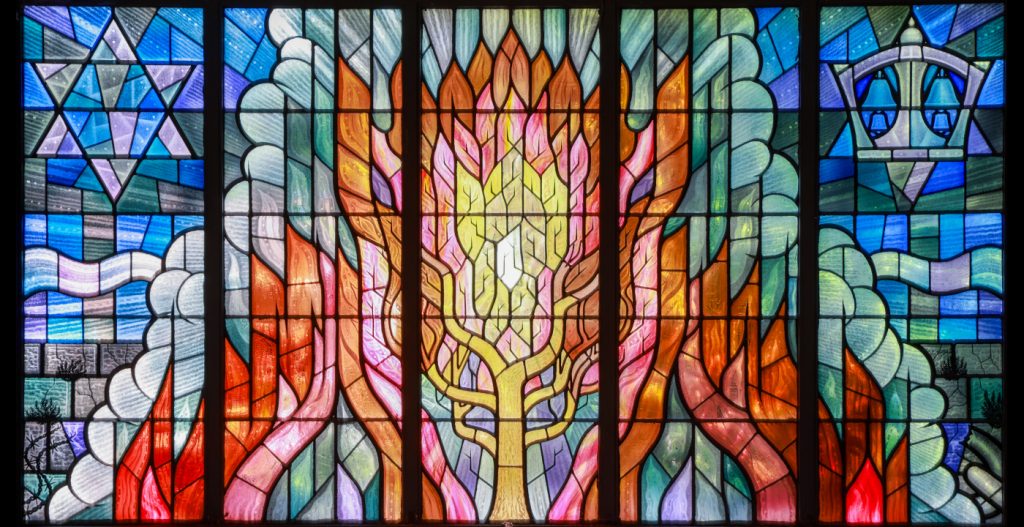
The building and Windows are integral to each other. The vaulted ceilings that mimic the shape of the tabernacle and the vast space of the Prayer Hall gives the Windows the space to shine and raises them up above the congregation in a way that gives the viewer a sense of awe. The design of the Prayer Hall may seem simple, but for those of us who attend through the year, often the whole space serves as a canvas for the coloured light streaming through the Windows.
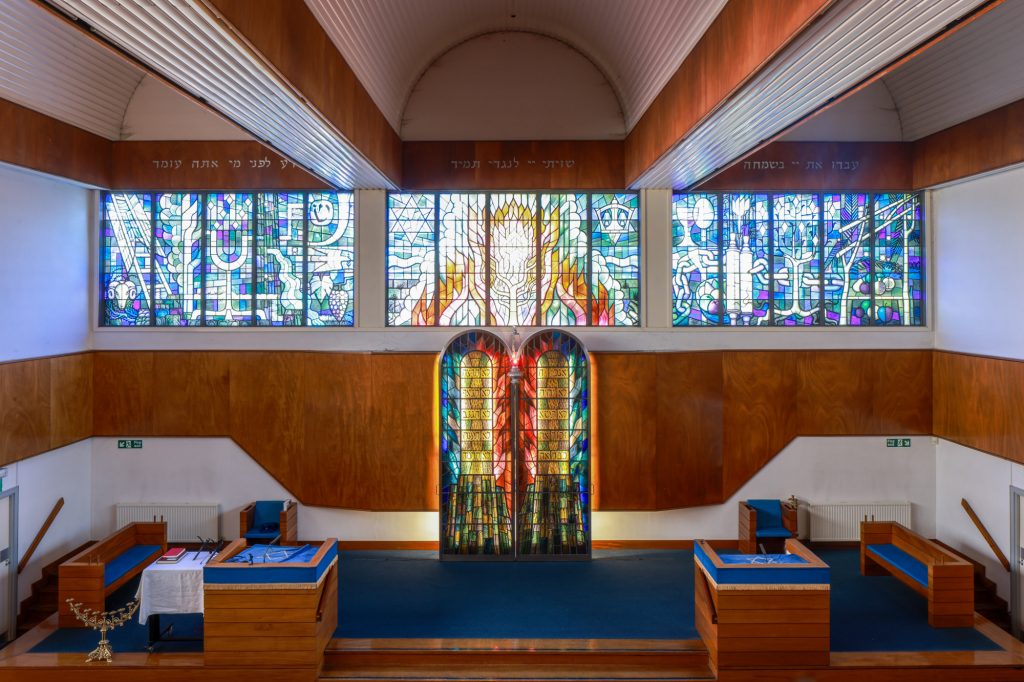
Integral to the windows as the foundation to the Burning Bush sit the complementary Ark Doors, the first use of glass for Ark Doors in the UK, which are illuminated from behind. And inside the Ark, our unfading, everlasting and most important light of all – the Torah Scrolls.
One congregant recollects the changing colours of the Windows as he watched them through the length of a day, during the Yom Kippur service. Another, the bright and total transformation of the AJEX Hall for Social Events. A third, recalls the visiting schoolchildren one April morning entering the Prayer Hall and dropping to their knees and shading their eyes, so intense was the ray of sunshine coming through the central flame of the burning bush.
This is our living, breathing, inspirational Holocaust Memorial Synagogue.